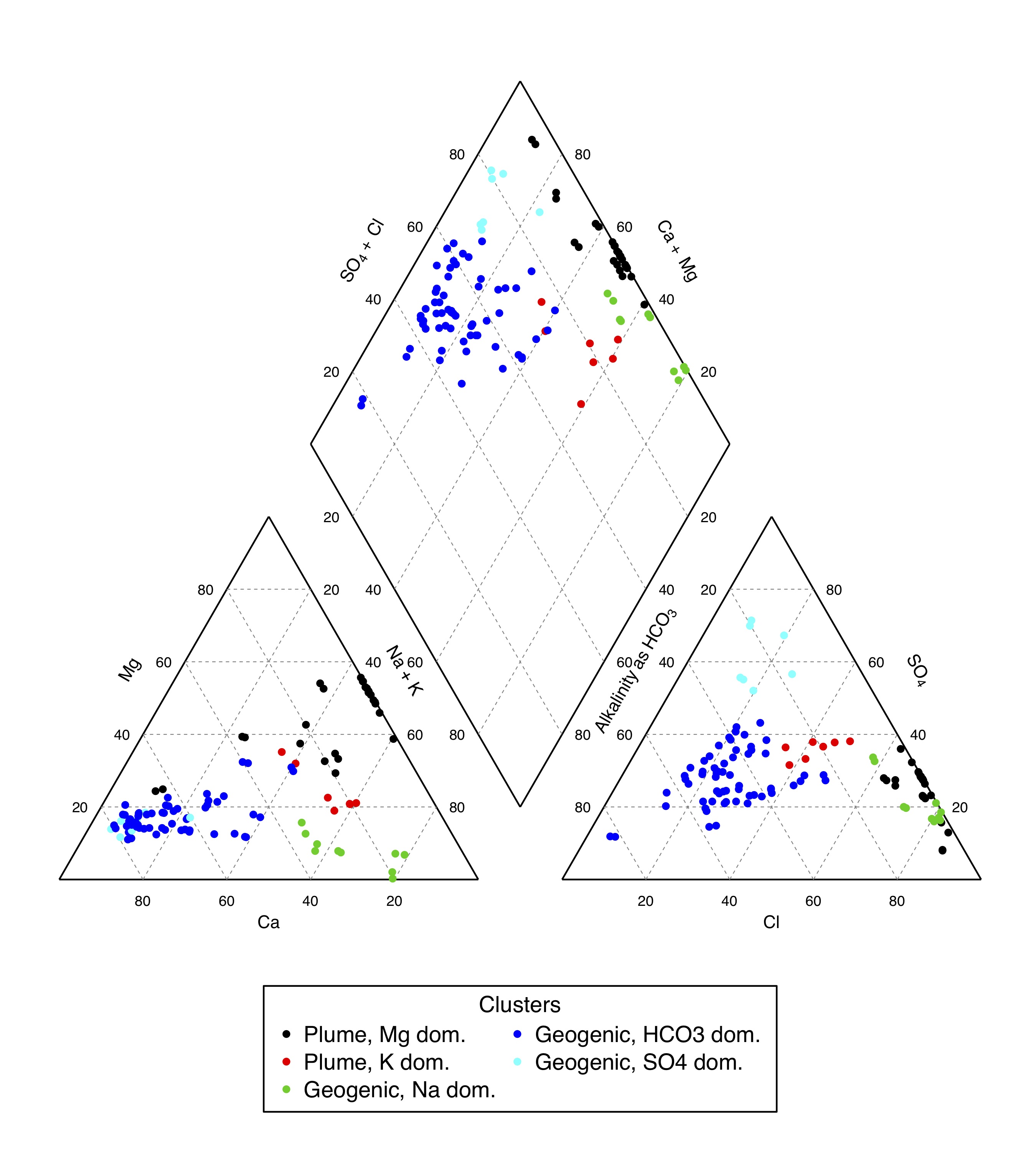Neural networks provide efficient workflows to extract hidden information from highly complex datasets and cast them into meaningful abstracted patterns. An example of a hydrochemical facies analysis has now been accepted in the special section Cumulative impacts of mining developments on water resources: theory, data analysis, modelling, and implications of the Journal of Hydrology.
The accepted paper can be found here:
„Paper“ (doi: 10.2136/vzj2018.08.0159)
The paper explores how artificial neural networks, here a self organizing map, can be employed to identify hydrochemical clusters from spatially distributed data. The method has been applied to a former potash mining site in order to differentiate between geogenic and anthropogenic sources based on ionic concentration variations. The self organizing map algorithm allows to explore the geometric relationships of projected data within a lower-dimensional grid and subsequently extract clusters based on a hierarchical analysis. In conjunction with classical ways of visualization the method provides a computationally simple and powerful alternative to deal with large datasets.
 Hydrochemical cluster identification based on an artificial neural network algorithm (Haselbeck et al. 2019).
Hydrochemical cluster identification based on an artificial neural network algorithm (Haselbeck et al. 2019).